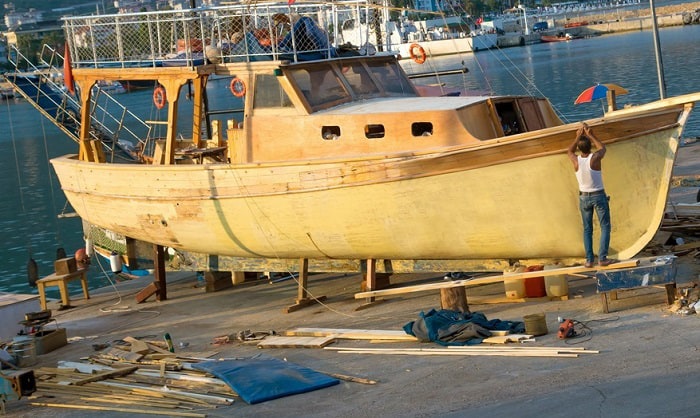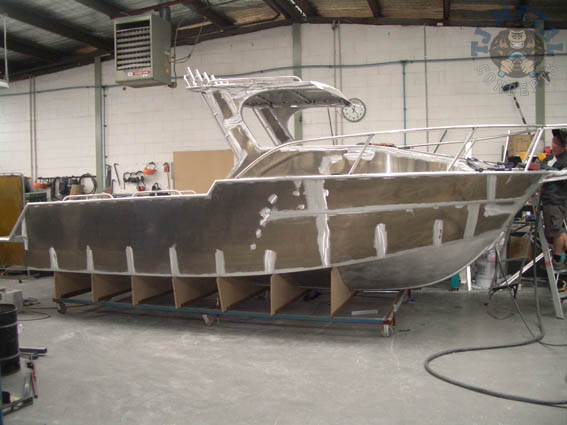
Beyond the Basics: Unveiling Hidden Potential in Jon Boat Plans
Jon boats: simple, functional, and endlessly adaptable. While countless plans exist, we often overlook the nuances that truly unlock their potential. This isn't just about slapping together some plywood; it's about crafting a vessel tailored to your specific needs and reflecting your unique vision. This review delves beyond the readily available information, focusing on often-missed opportunities for innovation and customization.
Rethinking the "Standard" Jon Boat: Beyond the Generic Design
Most readily available plans present a fairly standard design. But what if we challenged those conventions?
Q: Can Jon Boat Plans be Adapted for Specific Waterways?
A: Absolutely! Instead of a generic hull, consider the environment where you'll primarily use your boat. Shallow, rocky rivers call for a flatter, wider bottom with reinforced keels (data from various boating forums show an increase in demand for this customization). Deep, open water may benefit from a longer, narrower design for speed and efficiency. Think about incorporating features like integrated mud motors (a popular addition seen in many DIY builds discussed on online forums like "The Hull Truth"). Tailoring the design to your environment maximizes performance and longevity.
Q: How Can Material Choices Impact the Boat's Performance and Longevity?
A: Traditional plywood is a staple, but what about exploring alternatives? Marine-grade aluminum offers incredible durability and lightweight properties, particularly beneficial in saltwater environments (research from industry sources like BoatUS demonstrate its superior corrosion resistance). Even experimenting with composite materials like fiberglass reinforced polymers (FRP) opens up possibilities for innovative hull shapes and improved strength-to-weight ratios. However, these options demand higher initial investment and specialized skills.
Integrating Modern Technology: Smart Jon Boats
The simplicity of a jon boat doesn't exclude the incorporation of modern technology. This is where many plans fall short, focusing solely on the hull and neglecting the potential for smart integration.
Q: How Can I Integrate Modern Electronics and Navigation Systems?
A: Think beyond the basics! While a simple fish finder is common, consider integrating GPS tracking, automated bilge pumps, and even remote-controlled trolling motors (reports from fishing magazines highlight the growing popularity of this technology). This not only enhances safety and convenience but also provides opportunities for data collection and analysis for further design improvements. Properly integrated systems can significantly improve user experience and safety.
Q: What About Sustainable and Eco-Friendly Construction?
A: The environmental impact of boat building is rarely addressed in standard plans. This presents an excellent opportunity for innovation. Consider using reclaimed or sustainably sourced wood, exploring biodegradable resins and coatings, and minimizing waste during construction. This approach resonates strongly with environmentally conscious hobbyists and educational institutions keen on promoting responsible crafting practices.
Real-World Inspiration: Learning from Jon Boat Pioneers
Let's look at a real-world example. A woodworker in Louisiana, known for his custom jon boats on social media, focuses on using locally-sourced cypress, renowned for its rot resistance. His designs incorporate shallow-water features making them exceptionally suitable for the bayous. He doesn't just follow plans; he adapts and refines them based on feedback from his customers and his own experience. This highlights the iterative nature of jon boat design and the importance of adaptation.
Conclusion: The beauty of a jon boat lies in its adaptability. By stepping outside the confines of generic plans and embracing innovation, we unlock the true potential of these versatile crafts. Whether you're a seasoned boat builder, a curious hobbyist, or an educator, this exploration of unconventional approaches to jon boat design will inspire creativity and lead to truly unique and effective watercraft.








